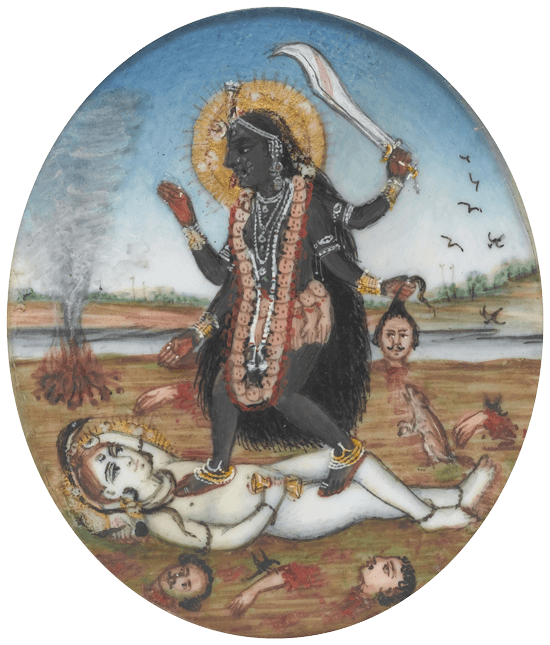 Change Language:
Change Language:

The creation of Goddess Kali from Goddess Durga is a significant episode in Hindu mythology, representing the fierce and protective aspect of the Divine Mother.

According to the legend, there was a demon named Raktabija who possessed a boon that made him virtually indestructible. Whenever a drop of his blood fell on the ground during battle, a new demon identical to him would manifest, making it challenging to defeat him.
The Devas (gods) were overwhelmed by Raktabija's power and sought help from Goddess Durga, the embodiment of divine feminine energy. Goddess Durga, with her immense power and compassion, decided to confront the formidable demon to protect the universe.
A fierce battle ensued between Goddess Durga and Raktabija. During the battle, Raktabija's blood spilled profusely on the ground, creating numerous clones of him. Each time Durga struck him down, more demons would emerge from his blood, making the situation increasingly perilous.
To overcome this challenge, Goddess Durga manifested her fierce aspect, known as Goddess Kali. With her pitch-black complexion, disheveled hair, and a necklace of demon heads, Kali personified primal and unstoppable power.
Goddess Kali fearlessly and relentlessly attacked Raktabija. As his blood fell to the ground, she devoured it before it could create more demons. By doing so, Kali prevented the demon's regenerative ability, effectively neutralizing his power.
Kali's unstoppable fury and her ability to consume Raktabija's blood resulted in his ultimate defeat. With the eradication of Raktabija and his clones, the Devas were relieved, and the universe was liberated from the menace.
Goddess Kali's creation from Goddess Durga exemplifies the different aspects of the Divine Mother, representing both benevolence and ferocity. While Durga embodies protection and compassion, Kali represents the raw and unrestrained power to annihilate evil forces and restore cosmic order.
In Hindu traditions, both Durga and Kali are revered and worshipped, each holding distinct roles in the divine play. The story of Kali's creation from Durga serves as a reminder of the dynamic nature of the Divine Feminine, encompassing both nurturing and fierce attributes for the greater good of creation.
There are many different forms of Goddess Kali, each with their own unique symbolism and characteristics. Here's a breakdown of some of the most well-known forms:
This is not an exhaustive list, there are many other forms! The specific forms and interpretations vary depending on region, tradition, and personal beliefs within Hinduism.
Try out the other sections